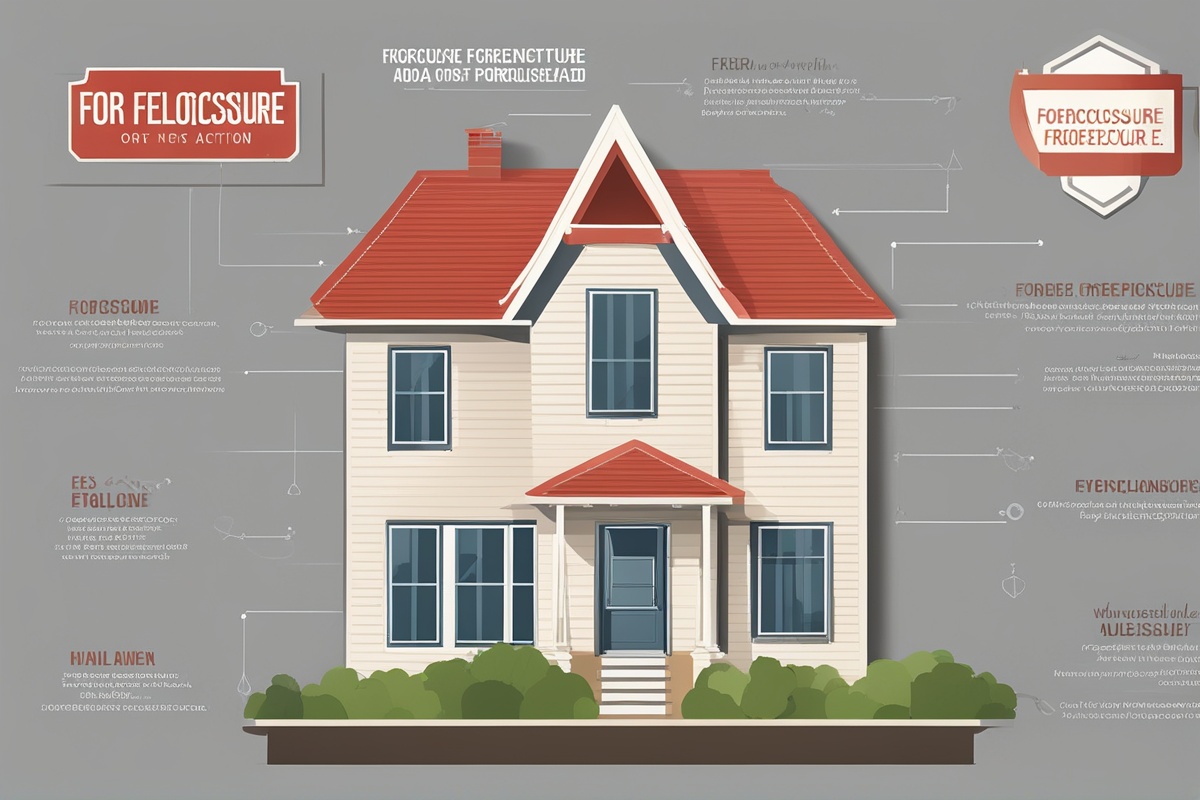Home repossession is a distressing situation that many homeowners may face during financial hardship. The process, often referred to as foreclosure in some regions, involves a lender taking back a property when a borrower fails to meet mortgage payments. Understanding the home repossession process is crucial for homeowners to navigate this challenging situation, potentially avoid losing their home, or at least prepare for the consequences. This comprehensive guide will break down the steps involved, legal considerations, and options available to homeowners facing repossession.
What Is Home Repossession?
Home repossession occurs when a lender, such as a bank or mortgage company, takes legal action to reclaim a property due to the borrower’s failure to make mortgage payments. This process is often the last resort for lenders after other attempts to resolve the debt have failed. Understanding the home repossession process begins with recognizing that it is not an immediate action—there are specific stages and legal requirements that must be followed, which vary by country or state. For homeowners, knowing these steps can provide opportunities to intervene and potentially save their home.
Stages of the Home Repossession Process
The home repossession process typically follows a structured timeline, though the exact steps and duration can differ based on local laws. Below are the common stages involved in most jurisdictions:
- Missed Payments: The process begins when a homeowner misses one or more mortgage payments. Lenders usually allow a grace period before taking action, but late fees may apply.
- Notice of Default: After several missed payments (often 3–6 months), the lender issues a formal notice of default, informing the borrower of the delinquency and potential consequences.
- Pre-Repossession Negotiations: Many lenders offer options like loan modifications, repayment plans, or forbearance agreements to help the borrower catch up on payments.
- Legal Action: If no resolution is reached, the lender may initiate legal proceedings, which could involve a court order for repossession or foreclosure, depending on the region.
- Eviction: Once the lender gains legal possession of the property, the homeowner is required to vacate. This may involve a formal eviction process if the occupant refuses to leave.
Understanding the home repossession process at each stage empowers homeowners to take proactive steps, such as seeking financial counseling or negotiating with their lender, to avoid reaching the final stages.
Legal Rights and Protections for Homeowners
Homeowners facing repossession are often protected by laws designed to ensure fair treatment during the process. For instance, in many countries, lenders must provide adequate notice before taking action and may be required to offer mediation or alternative solutions. In the United States, the foreclosure process (a form of repossession) is governed by state laws, which dictate timelines and homeowner rights. Similarly, in the UK, the repossession process involves court proceedings where a judge can delay or halt repossession if certain conditions are met. Understanding the home repossession process in your jurisdiction, including your legal rights, is essential to navigating this ordeal. For more information on foreclosure laws in the US, check out our detailed guide on Foreclosure Laws by State.
Options to Avoid Home Repossession
While repossession can seem inevitable once payments are missed, there are several strategies homeowners can explore to prevent it. Understanding the home repossession process includes knowing your options:
- Loan Modification: Request a change in the terms of your mortgage, such as a lower interest rate or extended repayment period, to make payments more manageable.
- Repayment Plan: Work with your lender to spread out missed payments over time, allowing you to catch up without immediate financial strain.
- Forbearance: Temporarily reduce or suspend payments for a set period, often during a financial crisis like job loss or medical emergency.
- Short Sale: Sell the property for less than the outstanding mortgage balance with the lender’s approval, avoiding the full impact of repossession on your credit.
- Deed in Lieu of Foreclosure: Voluntarily transfer ownership of the property to the lender to avoid formal repossession proceedings.
Exploring these options early can make a significant difference. For additional strategies, read our post on Tips to Avoid Foreclosure.
Impact of Home Repossession on Credit and Future Finances
One of the most significant consequences of home repossession is its impact on your credit score. A repossession or foreclosure can stay on your credit report for up to seven years, making it difficult to secure loans, mortgages, or even rent a property. Additionally, the process may result in a deficiency judgment, where the lender seeks to recover the remaining balance of the mortgage if the property sells for less than the owed amount. Understanding the home repossession process also means recognizing these long-term financial repercussions and planning accordingly. For insights into rebuilding credit after such an event, see our article on Rebuilding Credit After Foreclosure.
How to Prepare if Repossession Is Unavoidable
If all efforts to avoid repossession fail, preparation can help minimize the emotional and financial toll. Start by gathering important documents, such as mortgage agreements and communication with your lender, in case legal disputes arise. Next, seek temporary housing options and prioritize securing your belongings before eviction. Finally, consult with a financial advisor or legal expert to understand your obligations and rights during and after the process. Understanding the home repossession process fully equips you to handle even the worst-case scenario with dignity and foresight. Learn more about preparing for financial recovery in our guide on Financial Recovery After Foreclosure.
Disclaimer: The information provided in this article is for general informational purposes only and should not be construed as legal or financial advice. Home repossession laws and processes vary widely by jurisdiction, and individual circumstances can significantly impact outcomes. We strongly recommend consulting with a qualified attorney, financial advisor, or housing counselor to address your specific situation before making any decisions related to home repossession or foreclosure.
References
- Consumer Financial Protection Bureau – What is Foreclosure?
- U.S. Department of Housing and Urban Development – Avoiding Foreclosure
- UK Government – Repossession Guidance
- Federal Reserve – Foreclosure Resources
- Nolo – Foreclosure Rights for Homeowners
This content is for informational purposes only and not a substitute for professional advice.





